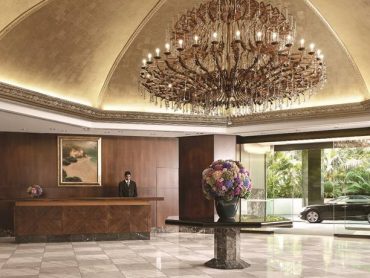Starbucks Is Culture Not Coffee
Starbucks has thousands of outlets. Nowadays if you find yourself in nearly a major city center anywhere in the world, you’re never more than a few blocks away from your next americano.
The long-term and strategic vision for Starbucks may surprise you, though. It’s not just about coffee and compelling you to consume every ounce of caffeine exclusively from them; it’s about the culture. There have been several books written about the brand and their business approach. True, there are issues and growing pains, as there are for any corporation of this size and stature. Let’s set those aside for a moment, as well as any personal beverage preferences that you might have, and let’s focus on the vision.
Start by looking at Starbucks purely as a brand. The logo is easy to identify and reinforced through multiple vectors, while the product is consistent and, for the most part, decent. Moreover, part of the product also includes each outlet’s atmosphere which are comfortable and have free WiFi to thereby encourage a social environment that caters to every age group.
How about this apply to your property? Firstly, it’s not just about the guestrooms, which you can compare to Starbucks coffee. Of course, these should be top-of-class with good variety and some unique offerings, but more importantly you should ask how your vision for the hotel will foster a great culture? And don’t let having only one outlet – versus thousands for Starbucks or a major hotel chain – deter you from approaching this question. In fact, this will make the task ahead far easier as the ship you’re trying to steer isn’t the Titanic.
Culture starts with the concept of a sense of place. Think of your lobby as a living room. Encourage guests as well as locals to linger, to check their phones, to chat, to grab a drink, to explore, to enjoy the furnishings, to interact with staff. How are you going to get visitors to sit for a moment and thumb through emails if you don’t offer free WiFi with clear signage? How are you going to stimulate conversation with readily access coffee and beverage services? Alcohol consumption isn’t critical to this – and it may not be feasible with your local laws – but refreshments of any kind will always help.
An example of sheer brilliance in this area is the Library Hotel Collection. Visit any of their four New York City properties and you’ll see this ‘living room concept’ in action. They go even further with complimentary food throughout the day. It’s this community approach where ‘mi casa es su casa’ helps to not only promote casual meetings in their public areas, but also interactions between disparate groups of guests.
Alternatively, think of any W Hotel and the work that that brand has done to generate buzz amongst the young and the hip. Their lobby bars and rooftop pool areas are always hotspots, and this atmosphere is complemented by similarly striking décor in the rooms. While I certainly wouldn’t want you to create a facsimile of this brand, touring one of its properties will help you to understand how all the little touches compound each other to create a vibrant, symphonic ambience. And from this, you might ask what type of culture you are trying to create? Do you want a fun, electric vibe or are you looking for a more traditional sensibility with perhaps a few art deco or neoclassical flourishes?
On that note, I can’t stress enough how much interior design and artwork can help to contribute to this sense of place. Visual stimulation helps spark emotions and incites a willingness to interact with such a dynamic space. Moreover, furnishings can activate other senses like touch and smell which good design also takes acoustics into account. In an ideal world, you would have budget to completely redo your lobby bar, making it an impressive hangout spot brimming with colorful art and plush décor, all congruent unto a given theme. Alas, though, this is only possible for 1% of hotels at any given time, so do what you can, knowing that any improvements in this regard will pay off when done right.
Aside from physical upgrades, a key factor of this sense of place is your staff and their guest service aptitude. Friendly, helpful, responsive, knowledgeable, insightful, funny, stylish and charming are but a few of the adjectives you want people to ascribe to your team. As well, encourage senior managers to mingle with guests in the lobby area, particularly when you host a regular ‘Meet the Managers’ social event. If possible, consider moving your concierge to be more visible and a part of this milieu. And if you have an in-house PR or social media team member, this is where they should spend a part of each day – talking and mingling with guests.
To conclude again with Starbucks, it came as no surprise when the company announced the closing of its online store. Starbucks isn’t in the merchandising business. Even with the excellent mobile app that lets you zoom in and out of the nearest location, the brand knows that it’s unique selling proposition is in its great in-person experience. Culture isn’t fostered through computer clicks; it’s made through human interactions. So, take a page from Starbucks and focus on heightening your sense of place, and then watch as your reputation blooms!
(Article by Larry Mogelonsky, published in HOTELS Magazine on Friday, November 17, 2017)



